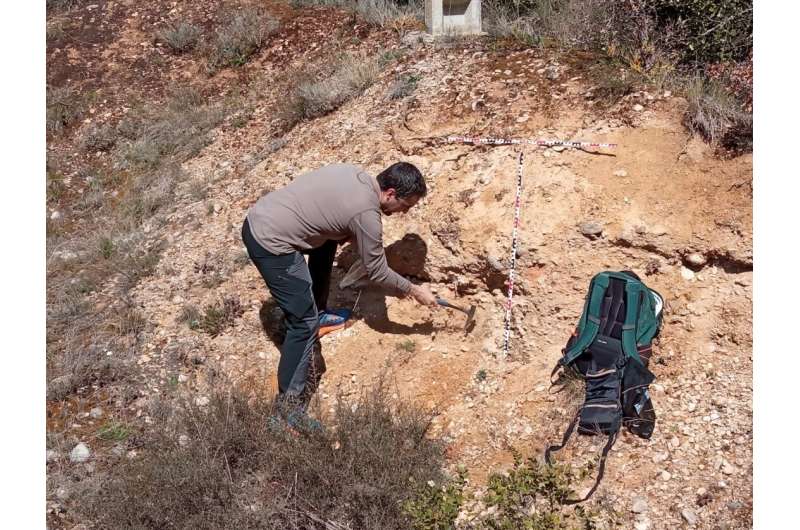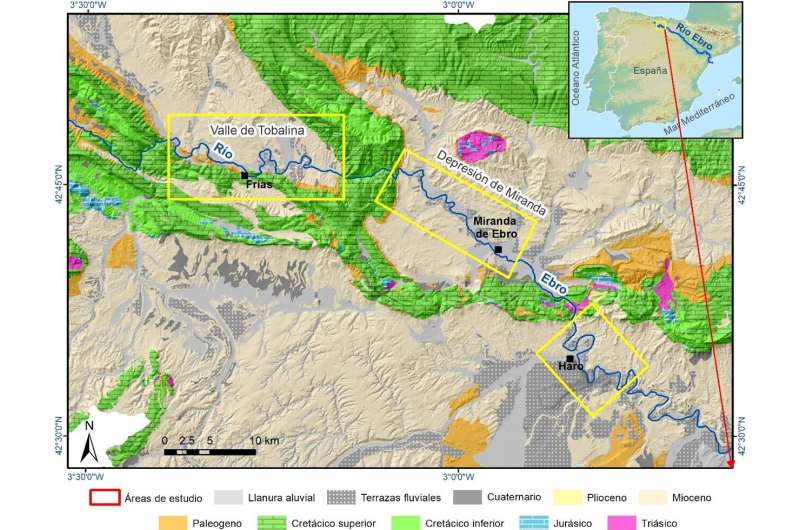Erosion by the Upper Ebro is decelerating and could eventually stop

How are fluvial valleys formed? Why do rivers cut valleys? Which mechanisms control the rate of fluvial incision? These are universal questions in Geomorphology about river erosion, and researchers from the Centro Nacional de Investigación sobre la Evolución Humana (CENIEH) have addressed them through a comprehensive study centering on the upper course of the Ebro River where it runs through the zones of the Tobalina valley, Miranda depression, and Haro sector, which belong to the provinces of Burgos, Álava, and La Rioja.
The results of this study, published in the journal Global and Planetary Change, make clear that vertical erosion by the Upper Ebro is declining and could eventually stop, when the valley would no longer deepen.
It is seen all over the world that many rivers have formed ever deeper and narrower entrenched valleys in their most recent phases of evolution: examples are the Yellow River in China, the Colorado canyon in North America, and rivers like the Seine, Rhine, Thames, and Ebro, in Europe.
A variety of studies have linked this generalized phase of valley entrenchment with a global event of stronger incision by rivers that started 700,000–1,200,000 years ago, up to the present day.
This rise in fluvial erosion has been explained by tectonic uplift which would have occurred in different parts of the planet generally, as well as by a harsher climate, as from that moment, more extreme and longer climatic cycles (100,000 years) became established, whose effects on vegetation cover and water flow would have stimulated erosion.

Nevertheless, this study of the surprising sequence identified in the Upper Ebro valley has furnished a record of something completely different. In the zones looked at, no fewer than 22 ancient terrace levels, namely, fluvial terraces indicating how valleys evolved, have been identified, and their position and dating reveal a gradual fall in the rate of bedrock erosion.
"These results show that the Upper Ebro has been losing incision strength for the last 1.2 million years, and it may stop deepening its valley in the near future, reaching what is known as a steady state," according to Alfonso Benito Calvo, lead author of the study.
The data suggest that the zone of the Cantabrian Mountains through which the Upper Ebro runs is tectonically stable, and that the Quaternary climatic changes have been unable to rekindle the incision capacity of this river, in contrast with the middle and lower sections of the basin, where fewer fluvial levels are conserved but these suggest a higher incision rate.
More information: Alfonso Benito-Calvo et al, Towards the steady state? A long-term river incision deceleration pattern during pleistocene entrenchment (Upper Ebro River, Northern Spain), Global and Planetary Change (2022). DOI: 10.1016/j.gloplacha.2022.103813
Journal information: Geomorphology
Provided by CENIEH





















